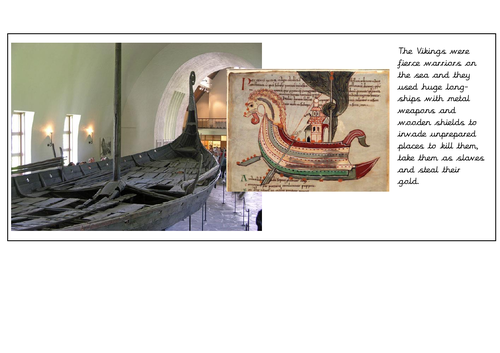




Anglo-Saxon and Vikings lesson linked to the National Curriculum for KS2 - the Viking and Anglo-Saxon struggle for the Kingdom of England to the time of Edward the Confessor. This lesson focuses on answering the question, “Did Alfred the Great deserved to be called ‘Great’?”
The interactive smart board takes you step by step through the lesson as well as using partner talk and reminding children of key events in the Viking/ Anglo-Saxon struggle. Children will need to look at sources that you could put around the room, or on their tables. They will fill in the grid and answer questions about each source such as, “What is it?” and “What information can we learn from it?” At the end of the lesson the whole class will have a discussion about source bias before deciding whether Alfred the Great was truly Great?
Focuses on 2 key historical skills - Understand methods of Historical enquiry and gather Historical data from various sources.
Something went wrong, please try again later.
This resource hasn't been reviewed yet
To ensure quality for our reviews, only customers who have purchased this resource can review it
Report this resourceto let us know if it violates our terms and conditions.
Our customer service team will review your report and will be in touch.